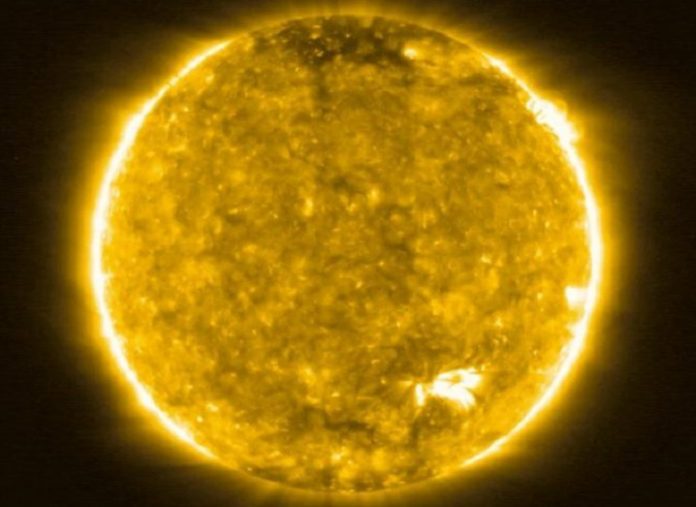A European and NASA spacecraft took the closest pictures ever taken of the sun, as seen in images released by researchers.
The close-ups are breathtaking to look at, and also reveal something entirely unexpected as well: small flares they’re calling “campfires,” all over the star’s surface.
“The campfires we are talking about here are the little nephews of solar flares, at least a million, perhaps a billion times smaller,” said principal investigator David Berghmans, an astrophysicist at the Royal Observatory of Belgium in Brussels, in a a NASA statement. “When looking at the new high resolution EUI images, they are literally everywhere we look.”
Despite the majority of staff at ground control at the European Space Operations Center in Germany having to work from home during the ongoing pandemic, the team was able to obtain the images from the Solar Orbiter as it made its closest pass on June 15.
The Orbiter came within just 48 million miles of the Sun. Its closest pass within the next year or so will get it within just 26.1 million miles. NASA’s Parker Solar Probe came even closer in June, getting to within just 11.6 million miles from the surface.
A closer flyby also means better images. “Because the camera itself doesn’t doesn’t have any zoom capability, that zooming happens by getting closer to the Sun,” Daniel Müller, ESA’s Solar Orbiter Project Scientist, told The Verge.
“These unprecedented pictures of the Sun are the closest we have ever obtained,” Holly Gilbert, NASA project scientist for the mission at NASA’s Goddard Space Flight Center, said in the NASA statement. “These amazing images will help scientists piece together the Sun’s atmospheric layers, which is important for understanding how it drives space weather near the Earth and throughout the solar system.”
Scientists are still unsure as to the exact nature of these “little” flare-ups — each of them are about the size of a country.
But we might soon know more thanks to the Solar Orbiter’s other scientific instruments. The Spectral Imaging of the Coronal Environment, or SPICE instrument, can measure the exact temperature of each nanoflare.















